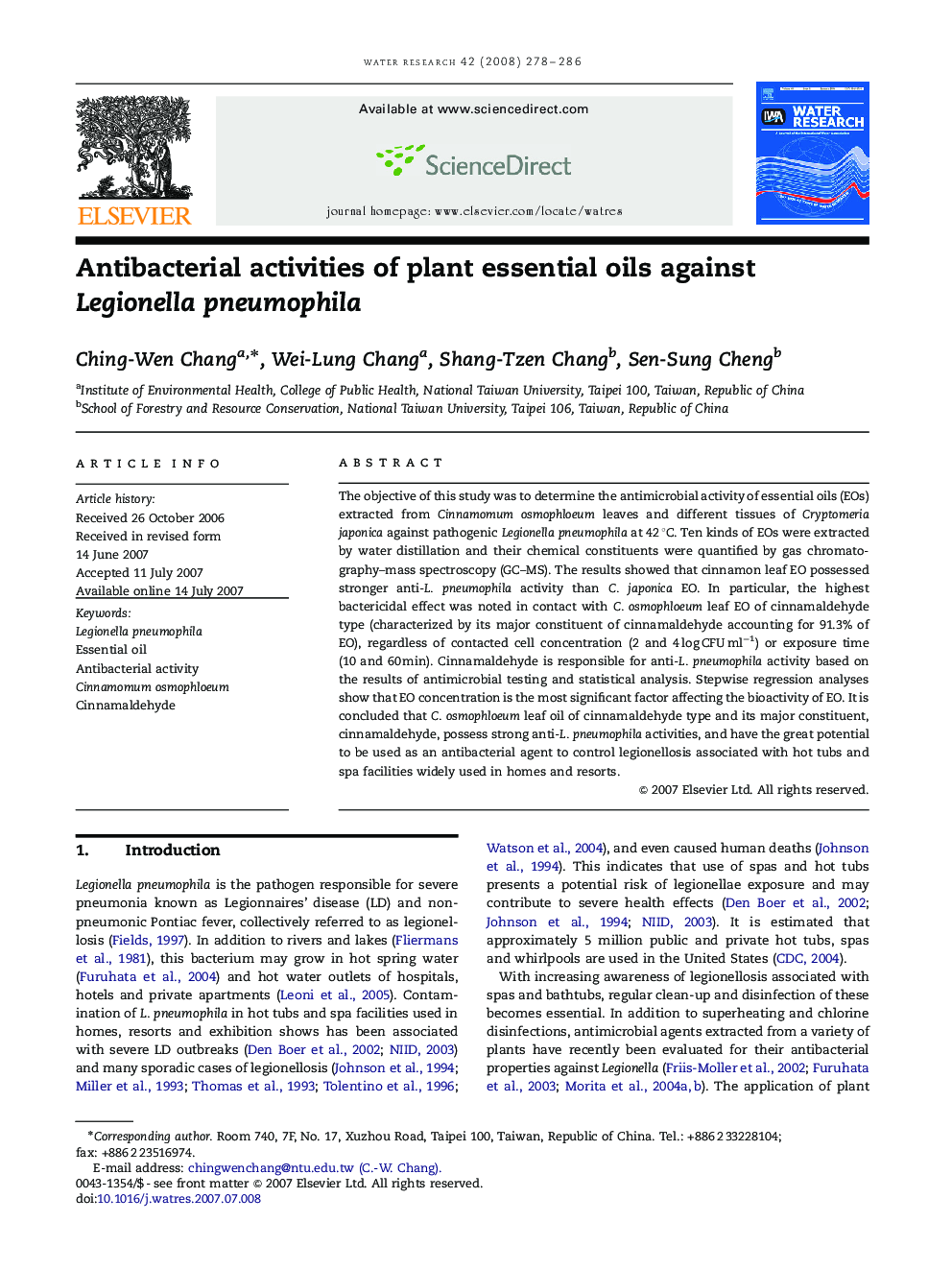| Article ID | Journal | Published Year | Pages | File Type |
|---|---|---|---|---|
| 4485761 | Water Research | 2008 | 9 Pages |
The objective of this study was to determine the antimicrobial activity of essential oils (EOs) extracted from Cinnamomum osmophloeum leaves and different tissues of Cryptomeria japonica against pathogenic Legionella pneumophila at 42 °C. Ten kinds of EOs were extracted by water distillation and their chemical constituents were quantified by gas chromatography–mass spectroscopy (GC–MS). The results showed that cinnamon leaf EO possessed stronger anti-L. pneumophila activity than C. japonica EO. In particular, the highest bactericidal effect was noted in contact with C. osmophloeum leaf EO of cinnamaldehyde type (characterized by its major constituent of cinnamaldehyde accounting for 91.3% of EO), regardless of contacted cell concentration (2 and 4 log CFU ml−1) or exposure time (10 and 60 min). Cinnamaldehyde is responsible for anti-L. pneumophila activity based on the results of antimicrobial testing and statistical analysis. Stepwise regression analyses show that EO concentration is the most significant factor affecting the bioactivity of EO. It is concluded that C. osmophloeum leaf oil of cinnamaldehyde type and its major constituent, cinnamaldehyde, possess strong anti-L. pneumophila activities, and have the great potential to be used as an antibacterial agent to control legionellosis associated with hot tubs and spa facilities widely used in homes and resorts.
